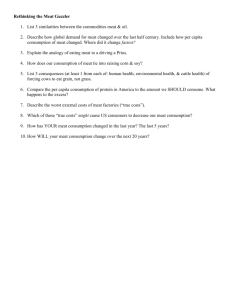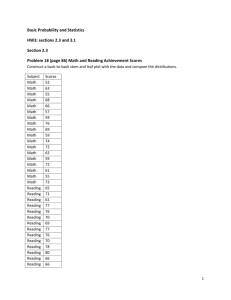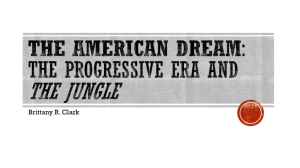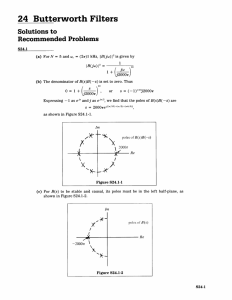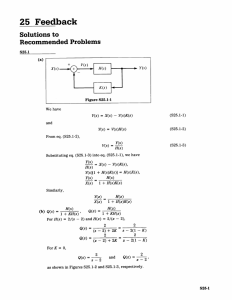Ch.2 Study Guide Review Packet
advertisement
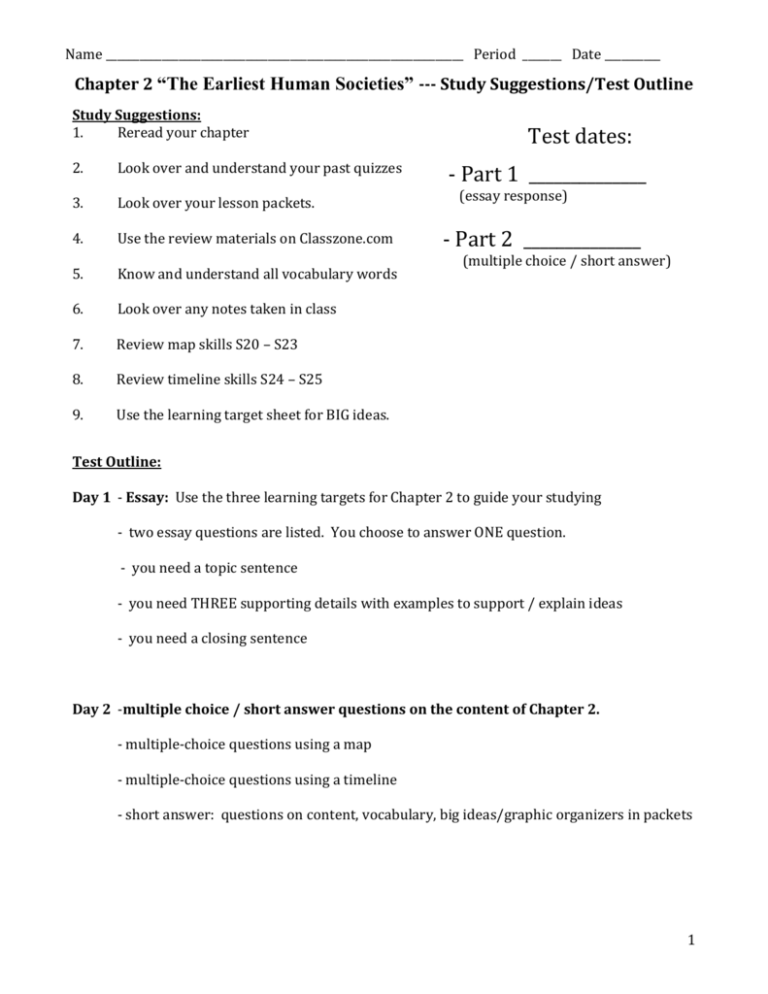
Name ________________________________________________________________ Period _______ Date __________ Chapter 2 “The Earliest Human Societies” --- Study Suggestions/Test Outline Study Suggestions: 1. Reread your chapter 2. Look over and understand your past quizzes 3. Look over your lesson packets. 4. Use the review materials on Classzone.com 5. Know and understand all vocabulary words 6. Look over any notes taken in class 7. Review map skills S20 – S23 8. Review timeline skills S24 – S25 9. Use the learning target sheet for BIG ideas. Test dates: - Part 1 ______________ (essay response) - Part 2 ______________ (multiple choice / short answer) Test Outline: Day 1 - Essay: Use the three learning targets for Chapter 2 to guide your studying - two essay questions are listed. You choose to answer ONE question. - you need a topic sentence - you need THREE supporting details with examples to support / explain ideas - you need a closing sentence Day 2 -multiple choice / short answer questions on the content of Chapter 2. - multiple-choice questions using a map - multiple-choice questions using a timeline - short answer: questions on content, vocabulary, big ideas/graphic organizers in packets 1 Name ________________________________________________________________ Period _______ Date __________ Chapter 2 Review Packet & Study Guide - “The Earliest Human Societies” Fill in the general terms, vocabulary words or concepts from Chapter 2. 1. People who were ___________________ moved around in search of food. 2. Around 8000 BC, people had the idea of _______________________ and began to plant seeds. 3. The _____________________ of grain helped the village to survive during bad times. 4. Stone tools were some of the first uses of __________________________. 5. Early humans used ________________________ as a technique to clear the land for farming. 6. To tame animals and grow crops is the definition of _____________________________ . 7. ___________________________ is a skill in one kind of work. 8. What was created /developed to help keep order and provide leadership in villages? ____________ 9. ___________________________ is the worship of God, gods, or spirits. 10. An _________________________ is a person who is trained at a skill or craft such as pottery. Short answer. Write your answer in complete sentences. 11. How did early hunter-gatherers live, use, and interact with their environment? 12. How did tools help early people to survive? 13. How did agriculture / farming change how people lived? 14. What is specialization? How did this affect people who were living in settlements? Remember to include examples of people who specialized and the jobs they had in early settlements. 15. Explain two advantages and two disadvantages of living in a complex village. 2 Name ________________________________________________________________ Period _______ Date __________ 16. Why did the earliest communities form around rivers? 17. Why would a village have a greater need for government than a hunter-gather band? Chart Skills: Use the chart below to answer questions 18 – 21. The Domestication of Animals Animal llama turkey guinea pig horse dog camel cat sheep goat pig cattle chicken Location South America North America South America Asia Asia Asia Africa Europe, Asia, Africa Asia Europe, Asia Europe, Asia, Africa Asia Use transport, meat meat meat transport guarding, herding, hunting transport killing mice and rats meat, wool milk, meat meat milk, meat meat, eggs 18. How were turkeys, guinea pigs, and pigs used? 19. Which animals were domesticated in South America? 20. What 8 animals were used for meat? 21. Which continent has the highest amount of animals listed on the chart? Timeline Skills: Look in your textbook at pages S24 and S25. These pages will help you practice reading timelines. Read the information on the pages and write the answers to these questions in the space below. Page S24 1. 2. Page S25 1. 2. Map skills: Look in your textbook at pages S20 –S23 for more practice with maps. Answer the questions in the space below. Page S20 1. 2. Page S21 1. 2. Page S22 1. 2. Page S23 1. 2. 3



